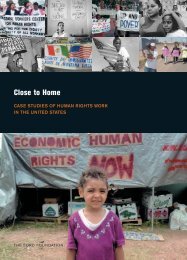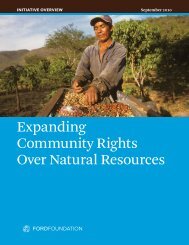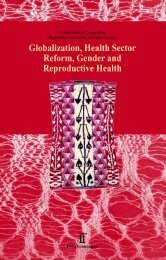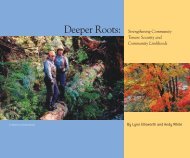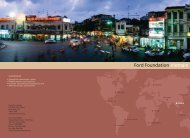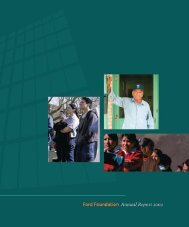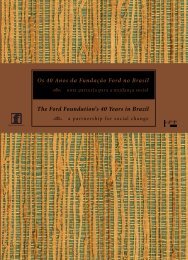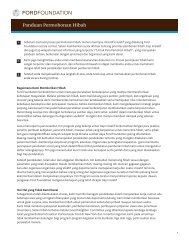Inclusive Scholarship: Developing Black Studies - Ford Foundation
Inclusive Scholarship: Developing Black Studies - Ford Foundation
Inclusive Scholarship: Developing Black Studies - Ford Foundation
Create successful ePaper yourself
Turn your PDF publications into a flip-book with our unique Google optimized e-Paper software.
<strong>Inclusive</strong> <strong>Scholarship</strong>: <strong>Developing</strong> <strong>Black</strong> <strong>Studies</strong> in the United States 33<br />
made a series of demands, placing the negotiations with the faculty and administration<br />
in an atmosphere of imminent violence. The occupation<br />
ended as the students, armed with rifles, shotguns, and belts of ammunition<br />
over their shoulders, marched out of the building.<br />
These were the most public and most notorious events; the struggle<br />
to establish a <strong>Black</strong> <strong>Studies</strong> program was going on simultaneously, as if it<br />
were a separate and independent matter. On September 15, 1968, the university<br />
agreed to establish an Afro-American studies program with a budget<br />
of $250,000 a year, and announced a search for notable <strong>Black</strong> scholars to<br />
staff it. In early December, however, students from the Afro-American society<br />
met with the acting director of the program and insisted that the program<br />
be turned over to <strong>Black</strong> students. Within a week they demanded that<br />
Afro-American studies be established as an autonomous all-<strong>Black</strong> college.<br />
President Perkins reaffirmed his support for an Afro-American studies<br />
program but rejected the idea of an all <strong>Black</strong> college. The faculty-student<br />
committee appointed James Turner, a graduate student, as director. In time,<br />
Turner was able to convince the faculty and administration that a separatist<br />
<strong>Black</strong>-studies program made sense. By mid-May 1969, in the wake of the<br />
most potentially explosive racial conflicts ever on a northern campus, Cornell<br />
acquiesced. While the program was neither autonomous nor all-<strong>Black</strong>,<br />
it was one of the most separatist and most political in the country.<br />
University of California, Berkeley<br />
By the spring of 1969, the University of California at Berkeley had been<br />
shaken by a series of student protests, few having to do with minority issues.<br />
Yet increased numbers of minority students,and their heightened consciousness<br />
of special needs, brought pressure on the university to reform its curriculum<br />
and increase minority faculty. These demands (in a context of broad<br />
student demand for reform) resulted in the creation that spring of a department<br />
of ethnic studies, which was divided into Afro-American, Chicano,<br />
contemporary Asian, and Native American studies divisions. The student<br />
instigators of this reform, behaving in keeping with the alienation they<br />
felt, insisted that the department remain outside the College of Letters and





